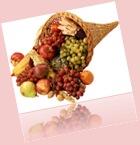We’d only just arrived in Karmiel and our delightful white-walled flat was almost bare.
How could I begin to cheer it up before our shipment arrived from the U.K.?
A florist in Rabin named “Bucket” (yeah, it took me a couple of weeks to work it out!) came to the rescue with a pretty miniature ‘Lucky Bamboo’ decorated with pebbles in an attractive dark pink glass pot.
But only a few weeks later, the lovely leaves began to yellow. Had the plant had too much sun? No. It sits in a shady spot on the breakfast bar.
Had it been overwatered? I don’t think so.
However, it had been watered with ordinary tap water and I should have used the spring or filtered variety.
Now read the experts:
“As millions of "lucky" consumers around the world have discovered, Lucky Bamboo makes the perfect house or office plant.
“It needs little care - only about an inch of water and little direct sunlight to keep it happy and thriving...
“What is ‘Lucky Bamboo’?
“Known for centuries as Lucky Bamboo, the plant is not a bamboo (botanical name: Dracaena) but a resilient member of the lily family that grows in the dark, tropical rainforests of Southeast Asia and Africa.
“How Much Care Does Lucky Bamboo Need?
“Keep water fresh by changing it every week, and always keep water levels at approximately an inch from the base of the canes. Lucky Bamboo prefers plenty of indirect sunlight and room temperatures at 65-70o.
“Although opinions differ on feeding, your Lucky Bamboo is a living organism, so it makes sense to add a mild solution to the water occasionally such as African Violet fertilizer. Since growth can be controlled by feeding, small amounts of fertilizer will keep the plant at a manageable size.
“Why Are the Leaves Turning Yellow?
Two of the most common factors are:
“1.) Too much direct sunlight
“2.) Too salty or heavily-fluoridated tap water. Give your new Lucky Bamboo a thriving start be sure to keep it away from direct sunlight, and water only with filtered or natural spring water.
“Why Is It Called "Lucky" Bamboo?
“Along with its ease of growth, Lucky Bamboo has long been associated with the Eastern practice of Feng Shui - or the bringing of natural elements of water, fire, earth, wood and metal into balance within the environment. Lucky Bamboo is believed to be an ideal example of the thriving wood and water element, with the addition of a red ribbon sometimes tied around the stalks - which is believed to "fire" the positive flow of energy or chi in the room.
“The number of stalks also has meaning : three stalks for happiness; five stalks for wealth; six stalks for health. Four stalks, however, are always avoided since the word "four" in Chinese sounds too similar to the Chinese word for "death"!
“Can I Take Cuttings from Lucky Bamboo?
“Yes. New stalks can be propagated from the original plant by using a sharp knife to cut through a stalk - just below the joint. Place the cutting in fresh, clean water. A fine mist spray to stalks is sometimes suggested to stimulate new bud growth.
“How Do I Re-pot Bamboo?
“Like any other houseplant, Lucky Bamboo can be transferred to a vase or pot two inches larger than the original, or planted permanently into a loose sand or soil mixture that provides lots of bottom drainage. To avoid root rot, be careful to let the top of the soil dry out between waterings.
msniw




 Rabin's official portrait will feature on the home pages of the entire 'Perfectlywrite' series, up to and including the secular anniversary of his passing.
Rabin's official portrait will feature on the home pages of the entire 'Perfectlywrite' series, up to and including the secular anniversary of his passing.
 On Tuesday night, several thousand youngsters gathered at Tel Aviv’s Kikar Rabin to take part in a memorial ceremony organized by the Israel Scouts to mark the 15th anniversary of the assassination.
On Tuesday night, several thousand youngsters gathered at Tel Aviv’s Kikar Rabin to take part in a memorial ceremony organized by the Israel Scouts to mark the 15th anniversary of the assassination. 
 Call me a daft, sentimental ol' romantic but I reckon not all's sweet and rosy in the glorious Galilee.
Call me a daft, sentimental ol' romantic but I reckon not all's sweet and rosy in the glorious Galilee. I know that a 'season' lasts for more than a week or a fortnight and does not conclude only to resume a couple of weeks later. Maybe it has more to do with supply and demand. Israeli food is surprisingly expensive. Even so, I guess the local farmers prefer to sell for export and while the best goods are flown abroad, we are treated to left-overs!
I know that a 'season' lasts for more than a week or a fortnight and does not conclude only to resume a couple of weeks later. Maybe it has more to do with supply and demand. Israeli food is surprisingly expensive. Even so, I guess the local farmers prefer to sell for export and while the best goods are flown abroad, we are treated to left-overs!  "Prickly Pear Cactus Mojito
"Prickly Pear Cactus Mojito